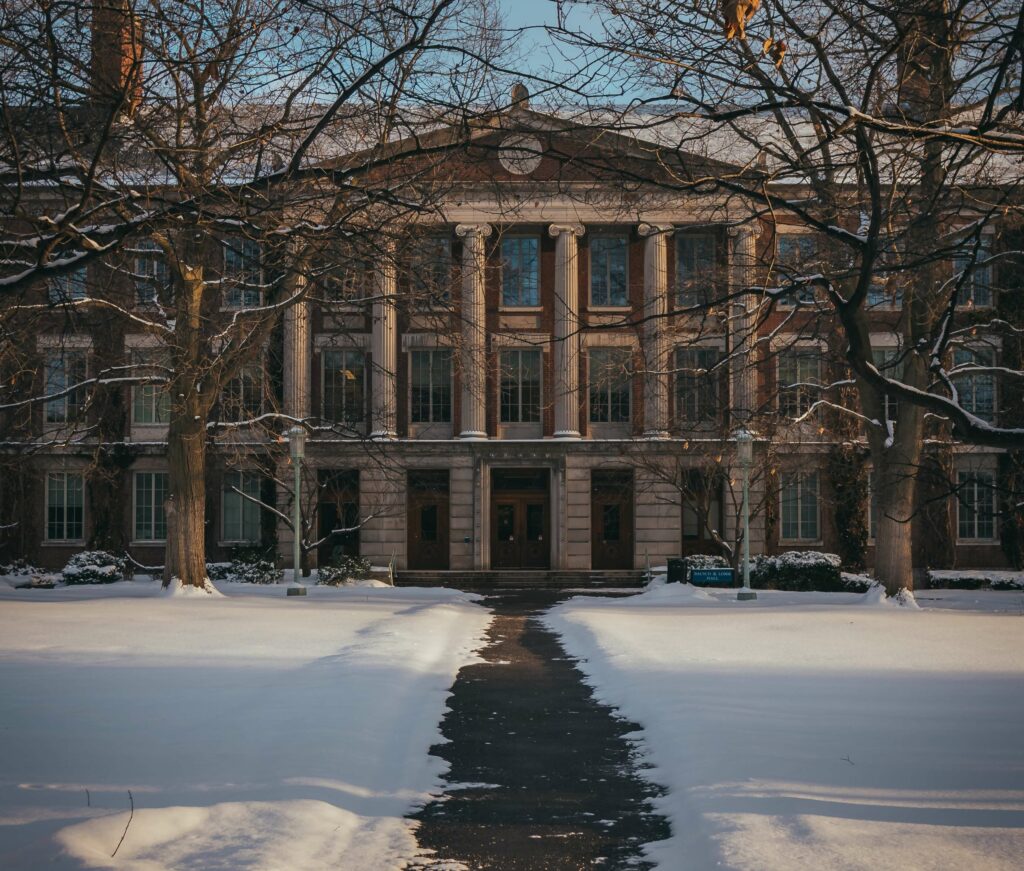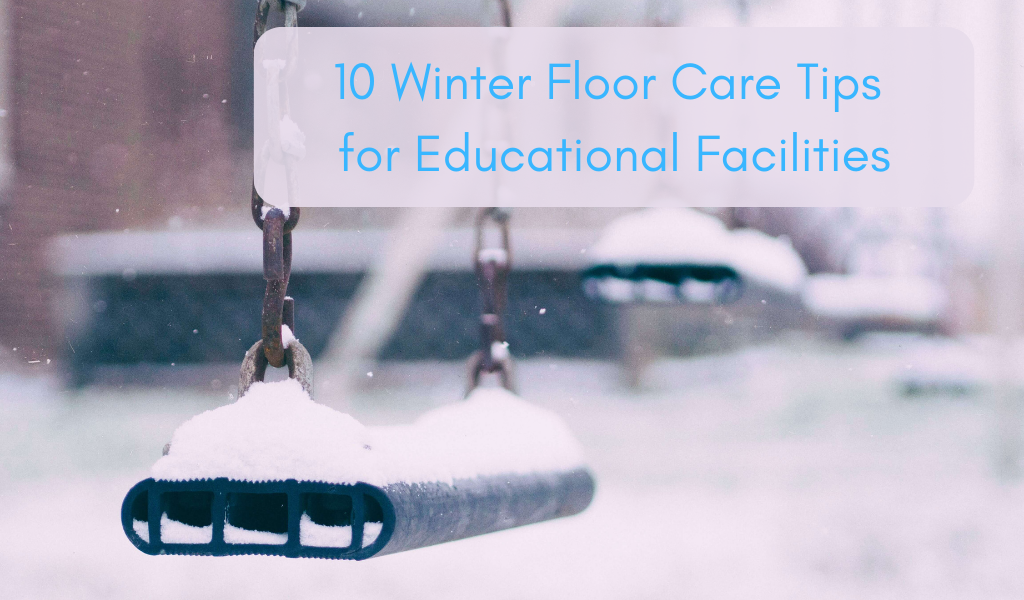If you work in high-traffic areas like schools and universities, the more winter floor care tips, the better!
If we’re going to be honest, schools, universities, banks, supermarkets, and other high-traffic areas are an absolute disaster in the winter. Snow, salt, slush, ice, grit, gravel, and just about any other messy thing from outside ends up tracked across carpets, entry mats, tile, and wood floors. It’s no wonder we need all the floor care tips we can get! Am I right?
Educational facilities might be the toughest to keep up with, though. Kids and young adults embrace the excitement of playing in the snow and walking through the mud. That’s great. If it makes them happy to walk through seven inches of snow on the way into school, well, why not?
The challenge that awaits cleaning organizations is how to then keep up with the mess. And it’s often more than just the entryways. As snow, slush, and ice melt from boots and laces, floors from the office to the library to the science lab get wet and grimy.
Aside from making everyone walk through a high-intensity dryer, what can you do? Here are some floor care tips specific to schools and other educational facilities that may help.
Let’s get your cleaning organization in top shape! Click here to schedule a call and learn how Janitorial Manager can help streamline and organize your processes in efficient new ways!

10 Floor Care Tips to Help You This Winter (Or in Any Inclement Weather)
Prevention is always the best medicine. That’s true for humans, and it’s true when it comes to winter floor care tips. Your best bet for ensuring your floors stay clean and in good shape is to prep them ahead of time, so we’ll start there and then move into some tips for winter care.
1. Strip and seal your floors. If possible, strip and reseal your hard flooring before winter weather sets in. This adds a fresh protective layer to your floors that will help prevent scratches and wear.
2. Scrub and recoat your floors. Stripping and sealing can take time, which can be difficult to come by in some settings. Plus, it’s an intensive process that isn’t always necessary. A scrub and recoat is much quicker and also offers a layer of protection for your floors.
3. Use an appropriate cleaner. Some products are specifically formulated to clean the types of dirt and residue that come from winter conditions. One example is Next-Gen Supply Group’s 117 Winterclean 365 WD, which has Green Seal Certification. This certification identifies a product that performs well and is generally “safer for human health and the environment compared to conventional alternatives.”
4. Plenty of entry mats. There are numerous entry mats designed to trap moisture and debris. You’ll find them made from rubber, polypropylene, and different fabrics. The “best” is highly dependent on the situation. If you don’t get very much winter weather, you might be fine with fabric mats. However, in messier areas, it might be worth spending the extra money to get something that is designed for winter weather. Bear in mind, too, that you’ll need to clean these mats, so you might find it easiest to get several smaller entry mats rather than one large one. In either case, larger mats will collect more water and sludge and help keep the rest of your floors more clean and dry.
5. Use a wet vac. Along with the floor mats, one of the floor care tips to add to the list is a wet vac. As often as you can, vacuum those entry mats, so they don’t get overloaded with dirt and water and spill out onto the rest of your floor. This will also help minimize the salt and ice melt compounds that make it further into your building.
6. Mop regularly. This is both a floor care and safety issue. Tile floors can get extremely slippery in wet conditions. Plus, you don’t want kids and adults tracking winter grime all over the place. Frequent mopping will help keep things safe and clean.
7. Rinse and clean your equipment often. Mops especially can get dirty and saturated quickly when there’s a lot of melting snow and ice. And the water in that mop bucket gets dirty fast. Needless to say, it’s essential to keep both the mop and the mop water rinsed and clean. Otherwise, you’re just spreading dirt around.
8. Deep clean. Take the time to deep clean your floors. That will make your job easier and help the floors stay in good shape.
9. Keep your supply closet stocked. The day before a big snowstorm is not the time to realize you’re out of fresh mop heads. Keep up with your inventory and plan ahead, so when that surprise storm hits, you have all the winter floor cleaner, mop heads, and clean mats you need.
10. Invest in drying equipment. Depending on the size of your facility, one or two portable blower fans can help keep your floors dry. That will help with safety as well as floor maintenance, especially on carpets or wood floors where water can damage the materials.
While winter weather can bring an increase in slush and grime, keeping floors clean doesn’t need to be a stressful or daunting task. Keep the above tips in mind, and when the next snow falls you’ll be well set for faster clean up and much less stress.
Harness the value of Janitorial Manager to streamline your cleaning operation like never before. Schedule a call and find out how to make your cleaning operation more efficient and cost effective!

